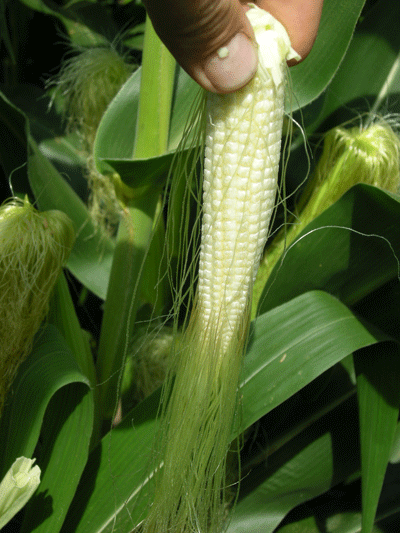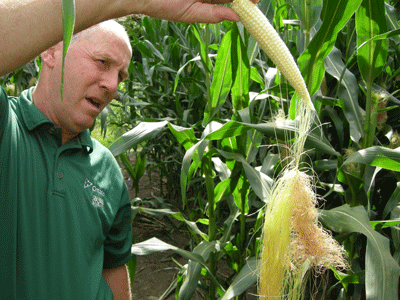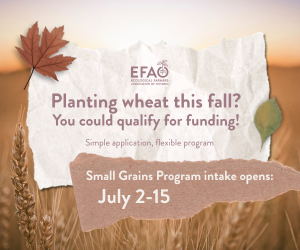Cropside: Corn flowering fundamentals
AGRONOMIC INFORMATION FROM ONTARIO'S CROP SPECIALISTS

SCOUT YOUR FIELDS AT THIS CRITICAL PERIOD OF GROWTH
knowing the stages
- The VT stage in corn development begins when the last tassel branch is visible. This will generally occur two to three days before the first silks emerge from the ear shoot, although this timing may vary with hybrids.
- The R1 stage begins when silks first emerge from the ear.
determining yield
- The three week period which begins when the tassel first emerges and concludes approximately two weeks after silk emergence is the most critical period for determining yield. If the photosynthetic engine is running wide open at this time it supplies abundant carbohydrate to the ear to maximize the total number of potential kernels that will be pollinated. High carbohydrate supply also prevents abortion of the newly fertilized kernels.
- A good stand of corn at this stage should intercept 95 percent of the sunlight. Check your fields at noon to see how well you are doing.
- Every ovule must be connected to a silk which extends out the end of the ear and receives a pollen grain which then grows down through the silk channel and fertilizes the ovule on the ear. Silks emerge beginning first with the base of the cob and then progress towards the end of the ear (see Figure 1).
Figure 1. Silks emerging from base to ear

evaluating pollination
- Once the ovules have successfully been fertilized the silk detaches from the kernel. Pollination can be evaluated very early in the flowering period by carefully removing the husks and gently tapping the ear. Silks will only remain attached to ovules where pollination has not been completed (see Figure 2). Similarly silks that continue to grow and extend well out beyond the end of the ear are a signal that pollination has not been successful.
Figure 2. Silks attached where pollination has not been completed.

impact of stress
- Stresses, such as dry weather, tend to delay silk emergence more than they delay tassel emergence and pollen shed. Lengthening the period between the beginning of pollen shed and silk emergence puts pollination at risk if the pollen supply has been reduced by the time silks emerge. Stress can also reduce carbohydrate supply to the ear and reduce the number of kernels even when pollen supply is adequate. •

















